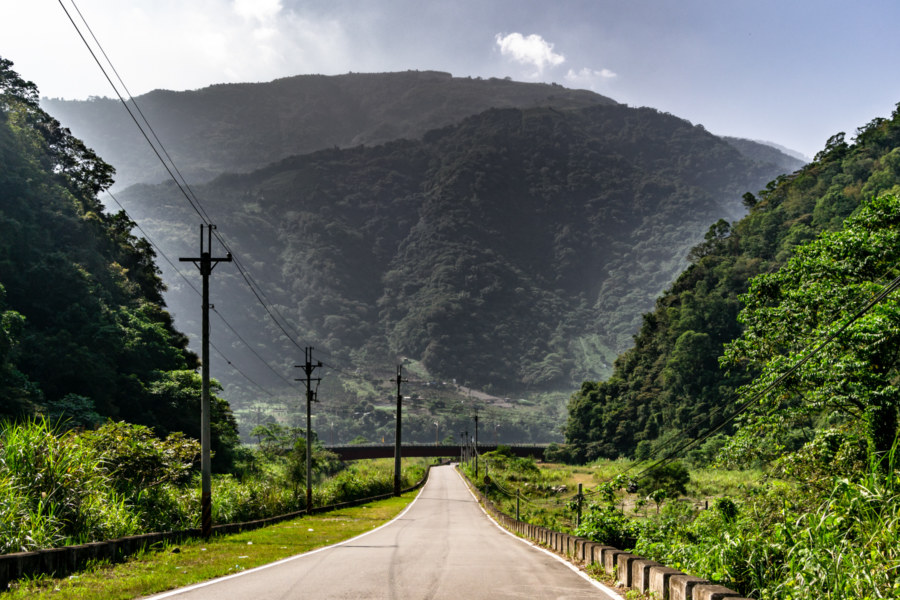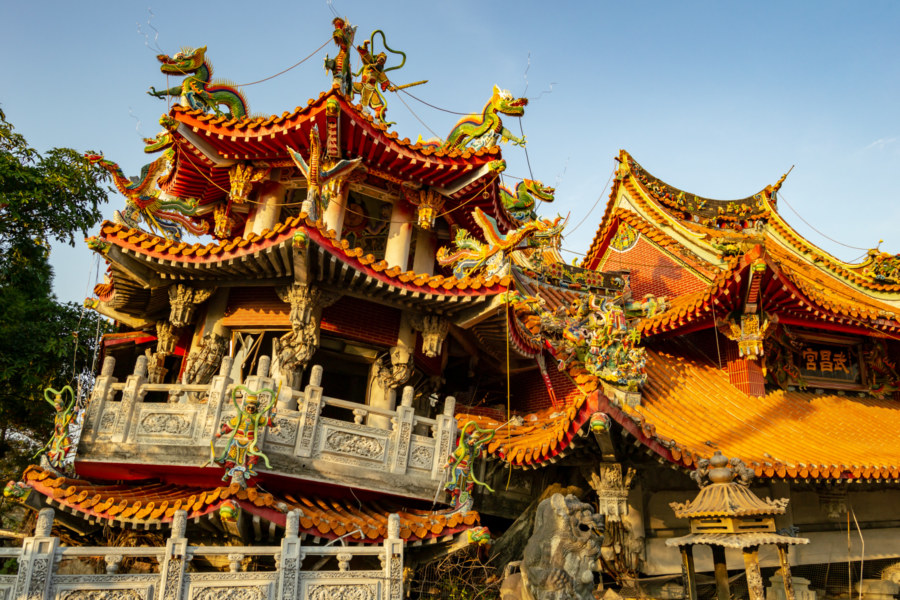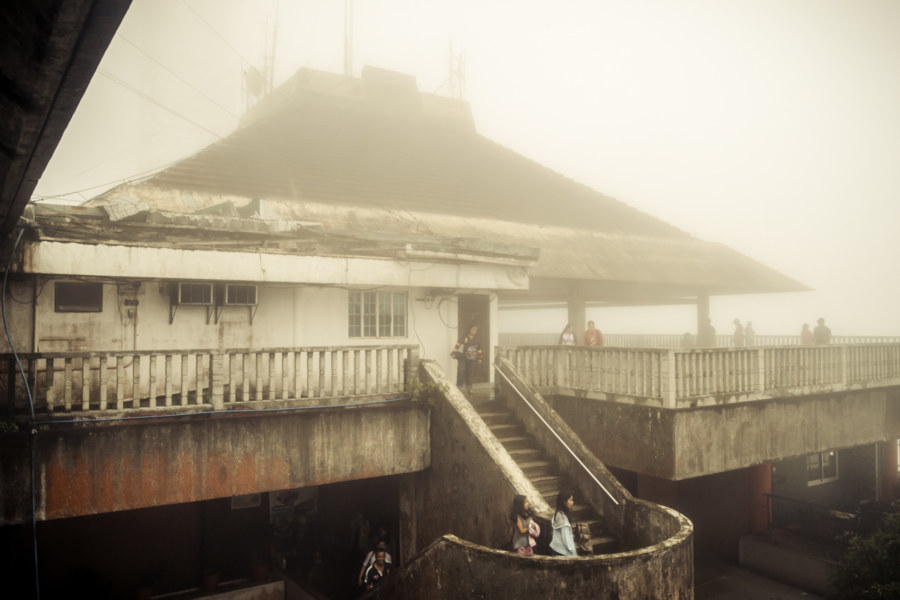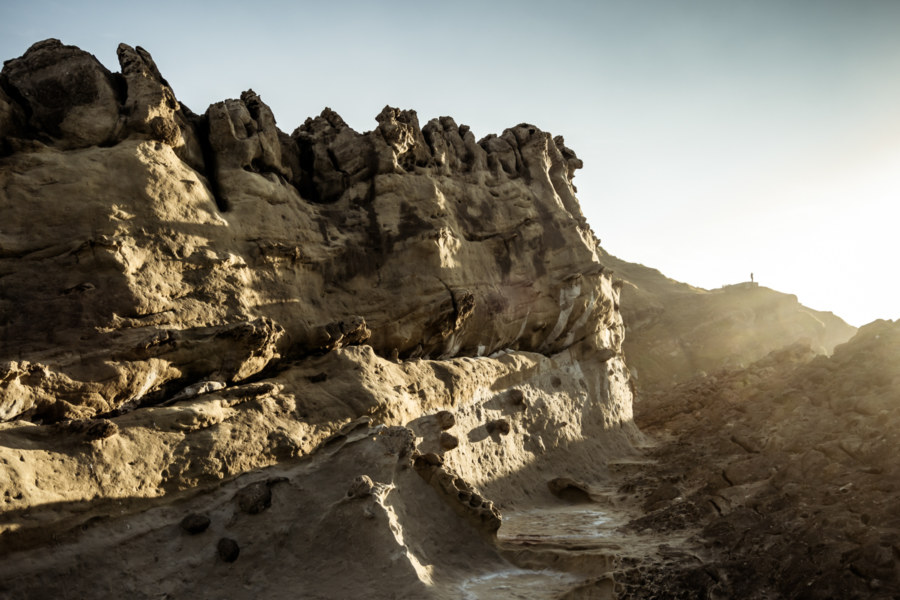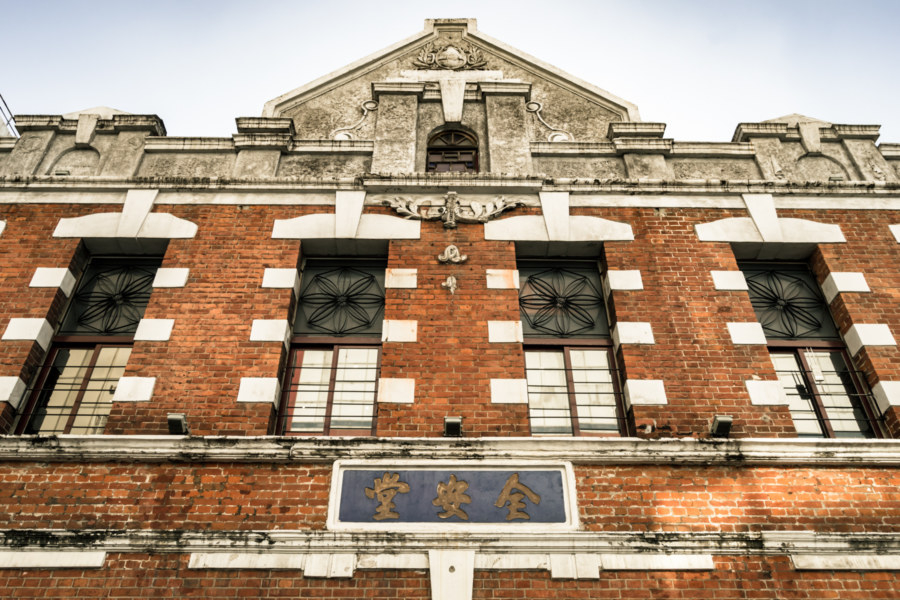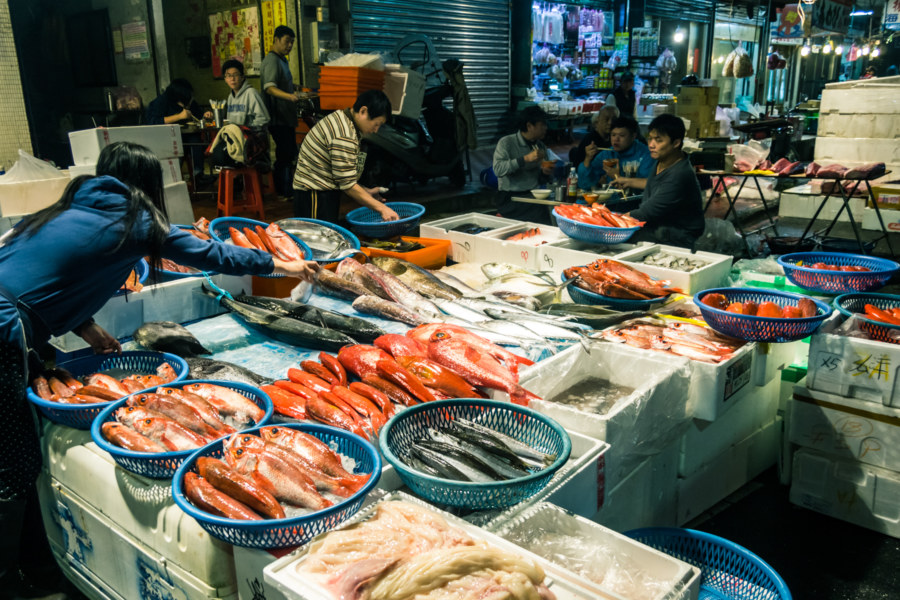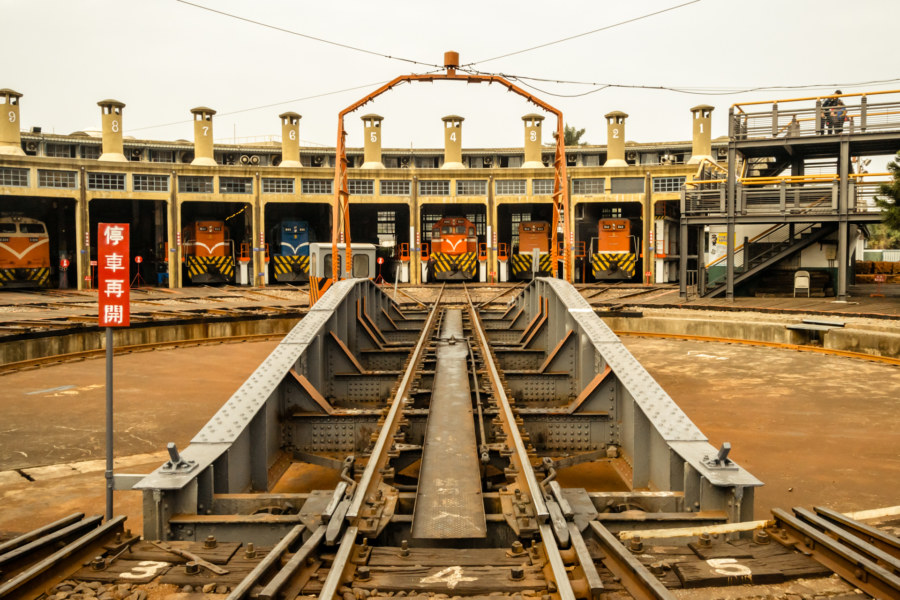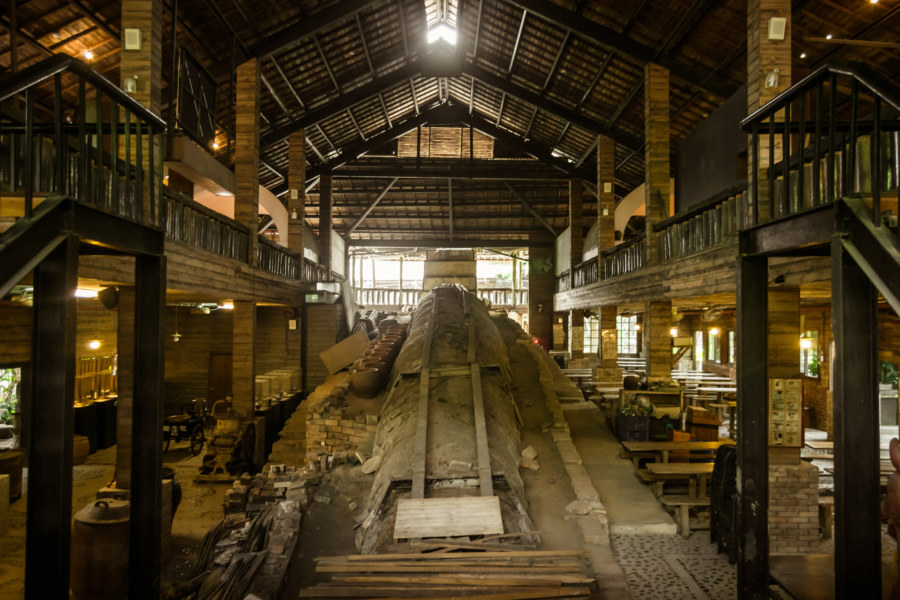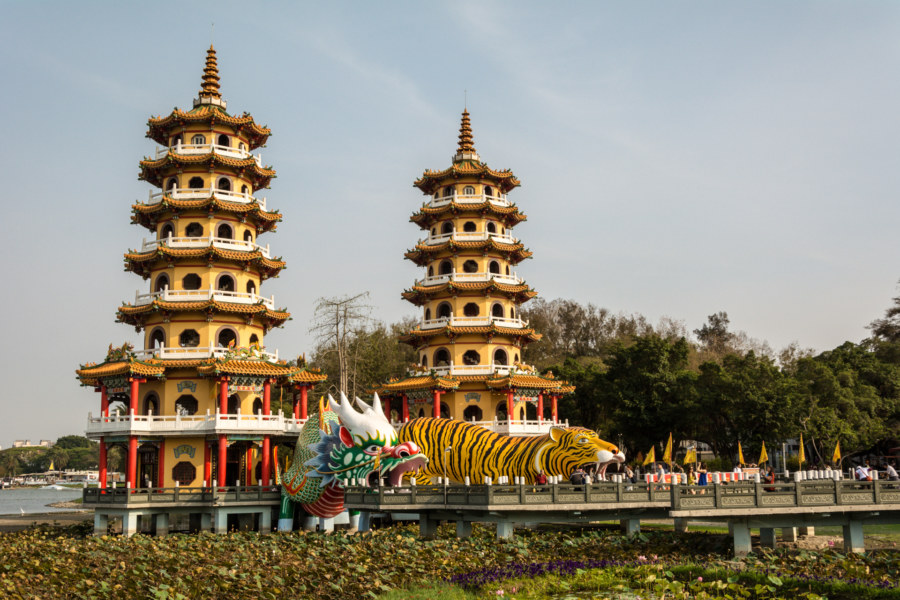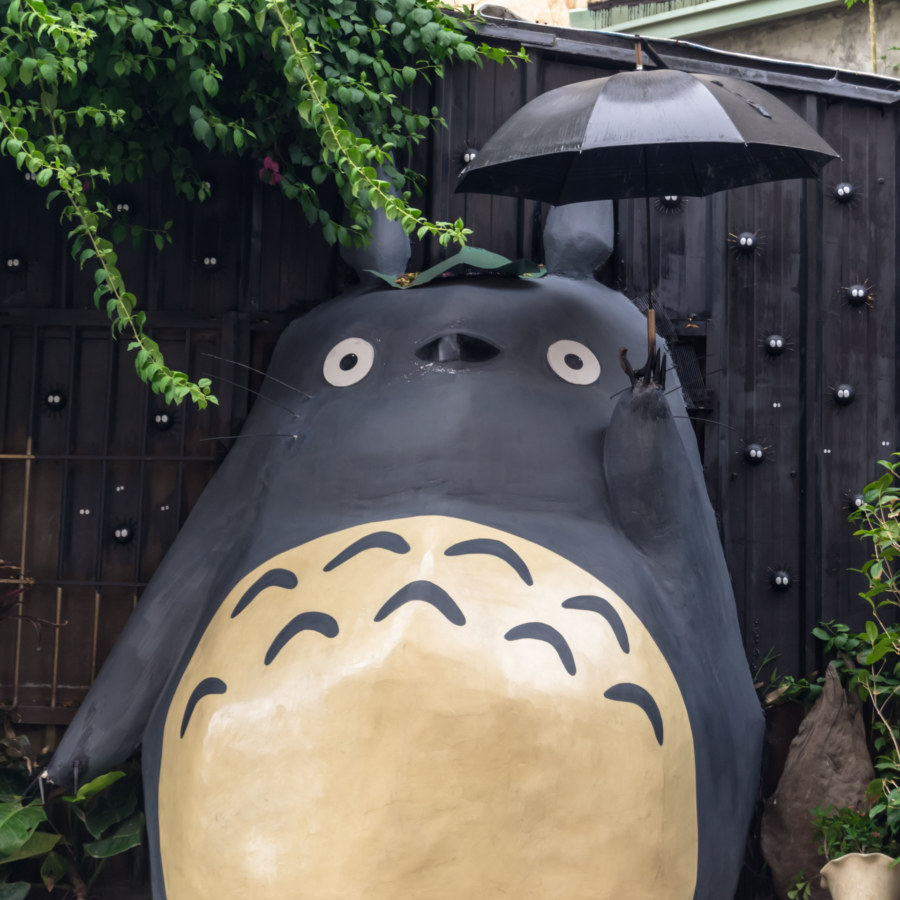This post is the final entry in a series documenting several days of riding around Nantou in October 2015. On the last morning of this trip I woke in Puli, close to the geographic center of Taiwan. I only had to return the scooter to the rental shop in Taichung sometime after nightfall so I decided to take a more circuitous route and check out many sights along the way. After a quick breakfast I headed south, briefly stopping by the shores of the majestic Sun Moon Lake (日月潭, covered in the previous entry in this series), and ascended a winding mountain access road leading into Xinyi, one of several majority Taiwanese Indigenous districts in this landlocked county.
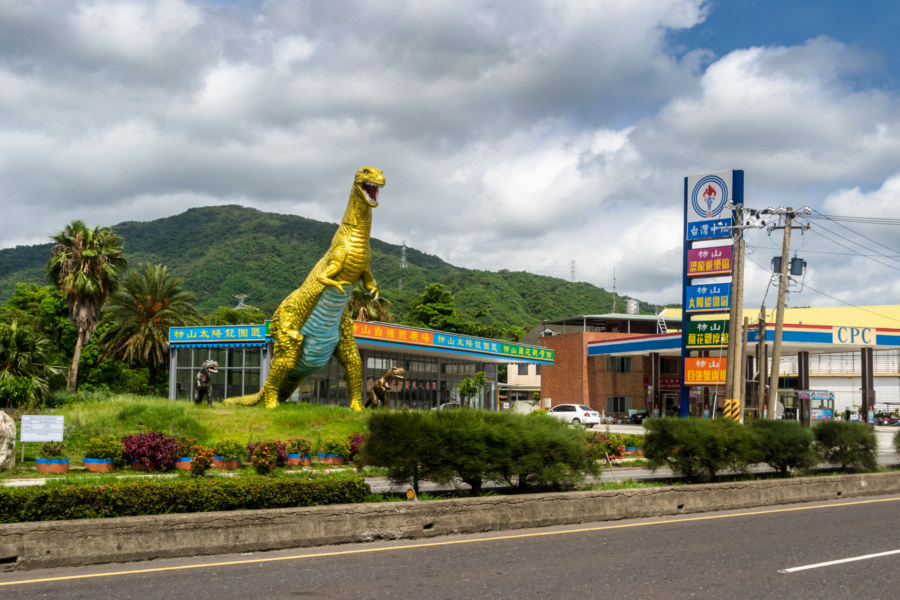
Attractions, for the purposes of this blog, are generally places catering to tourists that often require to you pay to enter and experience.
Adjacent Terms
Jiji Wuchang Temple 集集武昌宫
Wǔchāng Temple 武昌宮 is one of many remnants of the devastating 921 Earthquake, which ripped through central Taiwan on September 21st, 1999, toppling tens of thousands of buildings and claiming nearly 2,500 lives. Located in the rural township of Jiji in Nantou, less than five kilometers from the epicenter of the magnitude 7 quake, this temple was destroyed mere months after it was completed. Rather than clear the debris, the damaged structure was left more or less as it was the morning after it collapsed, and a new temple with the same name was built in front. Nowadays this ruined temple is a popular roadside attraction and a prime example of disaster tourism in Taiwan.
People’s Park in the Sky
People’s Park In The Sky is a peculiar attraction located about 60 kilometers south of Manila in Tagaytay, a popular leisure destination in the province of Cavite in the Philippines. Perched on top of Mount Sungay at an elevation of 709 meters, the highest point on the northern rim of the immense Taal Caldera, it was originally planned to be a palace suitable for state visits during the kleptocratic reign of Ferdinand Marcos. Construction began in 1979 with a drastic leveling of the mountaintop, which previously reached 759 meters, but ground to a halt with increasing civic unrest and the cancellation of Ronald Reagan’s state visit in 1983. Following the People Power Revolution of 1986 the unfinished mansion was transformed into a public park and monument to the greed, corruption, and excess of the Marcos era.
Postcards From Badouzi 八斗子明信片
Near the end of my first summer in Taiwan I visited Bādǒuzi (八斗子), a rocky headland, coastal park, and major fishing port at the far eastern edge of Keelung. I went there on impulse, not knowing what to expect, just to see what was out there. Google Maps and Taiwan’s excellent public transit system make random explorations like this almost effortless: pick a point of interest and follow the directions—the digital equivalent of throwing a dart at a map. This post features a selection of retouched photos from this expedition alongside the sort of explanatory text I wouldn’t have been able to write back in 2013. Fair warning for arachnophobes: this post contains several gratuitous photos of giant spiders and other creepy crawlies!
Quan’an Hall 全安堂
Quán’ān Hall 全安堂 is a century-old building on Taiwan Boulevard 臺灣大道 not far from the old train station in Taichung. Built in 1909 with red brick, reinforced concrete, and a Neo-Baroque style commonly attributed to Japanese architect Tatsuno Kingo 辰野金吾 (中文), it was a pharmacy for many decades, and more recently a bakery. A few years ago it was rebranded as the Taiwan Sun Cake Museum 台灣太陽餅博物館, which now operates a gift store on the ground floor and, beneath the exposed wooden beams of the restored rooftop on the second level, a cafe, event space, and interactive museum.
Kanzaiding Fish Market 崁仔頂漁市場
Kànzǎidǐng Fish Market 崁仔頂漁市場 is supposedly the longest-running operation of its kind in northern Taiwan. Back in the Japanese colonial era the market was located along the banks of the Xùchuān River 旭川河 in Keelung, formerly a navigable canal running through the downtown core and emptying into the harbour. The name of the market is derived from a Taiwanese Hokkien term for the stone stairs that once lined the side of the canal; Kanzaiding literally means “top of the stairs”. The Japanese built a pier in the late 1920s, making it easy for fishermen to offload their catch next to the market, and convenient access to the railway network encouraged its growth.
Changhua Roundhouse 彰化扇形車庫
One of the most extraordinary attractions in Taiwan is the historic Changhua Roundhouse 彰化扇形車庫, originally built in 1922 during Japanese colonial rule and still in operation today. Although information is hard to come by it seems that it might be the only roundhouse still operating in Asia—and certainly one of the oldest still in regular use anywhere in the world. Every other roundhouse I researched for this article has been abandoned, demolished, repurposed, or converted into a museum—and those rare few that are still operational have been mighty hard to date. As such, the Changhua Roundhouse is a dream to visit for a railway enthusiast like myself, particularly since the ambiance hasn’t been ruined by the sort of tacky treatment you’ll often find at Taiwanese tourist attractions. After signing in with the guard at the gate I had free run of the place—and as you can see from some of the following photos, nobody minded me getting shockingly close to moving trains as the mechanics went about their daily routines.
Shuili Snake Kiln 水里蛇窯
The Shuili Snake Kiln 水里蛇窯 is a wood-fired pottery kiln on the outskirts of Shuili, Nantou. The name is derived from the kiln’s serpentine shape, though to my eyes it looks more like a slug than a snake. Founded in 1927 by master potter Lín Jiāngsōng 林江松, it remained a family business for generations before being opened to the public as a “ceramics park” in 1993.
Zuoying Lotus Pond 左營蓮池潭
Lotus Pond 蓮池潭 is a manmade lake in Zuoying, Kaohsiung, widely known for its quirky assortment of pagodas, pavilions, and temples. Earlier this year I made a short stop at Lotus Pond on the way to the old walled city of Zuoying a little further south. I like exploring temples in Taiwan but was mildly concerned Lotus Pond would be a bit too touristy for my liking. Turns out I had nothing to worry about; my brief tour of the southwest side of the lake was memorable and fun.
Totoro Bus Stop in Taichung
Taiwan loves Totoro, the iconic star of Miyazaki’s animated classic My Neighbor Totoro. Known locally to Chinese speakers as Duōduōlóng 多多龍 (or 豆豆龍) and—my favourite—Lóngmāo 龍貓 (literally “dragon cat”), Totoro recently appeared on the streets of Taichung alongside Chibi and Chu Totoro, numerous makkuro kurosuke (soot sprites) and No-Face (who appeared in Spirited Away). These life-sized, fan-made sculptures have drawn so much interest that the site even appears on Google Maps as Dàlǐ Totoro Bus Stop 大里龍貓公車站.
